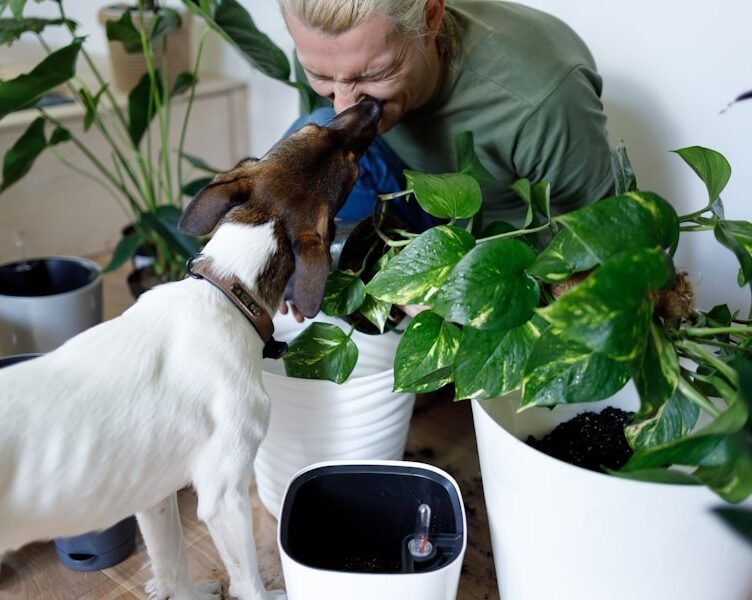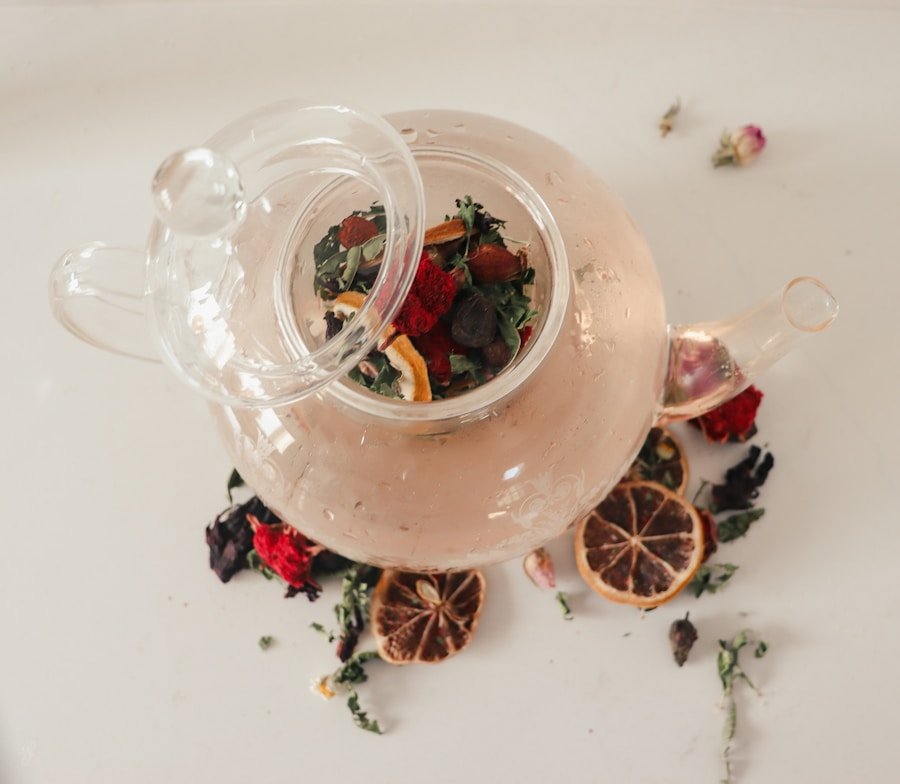Establishing a kitchen herb garden is an excellent way to incorporate fresh, flavorful ingredients into your cooking. Regardless of your gardening experience, growing herbs indoors can be a fulfilling and enjoyable hobby. When selecting the most suitable indoor herbal plants for culinary purposes, it is essential to consider the herbs you use most frequently in your cooking.
Popular choices for indoor herb gardens include basil, parsley, cilantro, mint, and thyme, which are not only versatile in their culinary applications but also tend to flourish in indoor environments with proper care and attention. When creating your indoor herb garden, it is crucial to consider the available space and lighting in your home. Most herbs require a minimum of 6-8 hours of direct sunlight per day, so it is essential to position your herb garden in a sunny spot near a window.
If natural light is limited, you may need to consider using grow lights to supplement the light for your herbs. Additionally, choosing the right containers for your indoor herb garden is vital. Ensure that the pots have drainage holes to prevent water from accumulating at the bottom, which can lead to root rot.
By selecting the right herbs, providing adequate lighting, and using suitable containers, you can create a thriving indoor herb garden that will provide you with fresh, flavorful ingredients for your culinary creations.
Key Takeaways
- Choose the right herbs for your indoor kitchen garden based on your culinary preferences and available space
- Follow essential tips for growing herbs indoors, such as providing adequate sunlight and proper watering
- Top culinary herbs for indoor gardens include basil, mint, parsley, chives, and thyme
- Care for and harvest your indoor herb garden by regularly pruning and using the fresh herbs in your cooking
- Enjoy the benefits of having an indoor herb garden, such as having fresh herbs at your fingertips and adding flavor to your dishes
Choosing the Right Herbs for Your Indoor Kitchen Garden
Easy-to-Grow Herbs for Indoor Gardens
When selecting herbs for your indoor kitchen garden, it’s essential to consider both your personal preferences and the growing conditions in your home. Herbs like basil and parsley are relatively easy to grow indoors and offer versatility in their culinary uses. They can be used in a wide range of dishes, from pasta sauces to salads to cocktails.
Herbs with Specific Growing Requirements
Other herbs, such as cilantro and mint, have specific growing requirements and may be more challenging to cultivate indoors. However, with the right care and attention, these herbs can also thrive in an indoor environment.
Considering Space and Growth Habits
In addition to considering the culinary uses of the herbs, it’s also important to think about how much space you have available for your indoor herb garden. Some herbs, such as rosemary and sage, can grow quite large and may require larger containers or more space to spread out. If you have limited space, you may want to focus on smaller herbs like thyme and oregano that can be grown in smaller pots or even in a vertical herb garden. By carefully considering your personal preferences, growing conditions, and available space, you can choose the right herbs for your indoor kitchen garden that will provide you with fresh, flavorful ingredients for your cooking.
Essential Tips for Growing Herbs Indoors
Growing herbs indoors can be a rewarding and enjoyable experience, but it does require some care and attention to ensure that your herbs thrive. One essential tip for growing herbs indoors is to provide them with the right amount of sunlight. Most herbs require at least 6-8 hours of sunlight per day, so it’s important to place your herb garden in a sunny spot near a window.
If natural light is limited in your home, you may want to consider using grow lights to supplement the light for your herbs. Another essential tip for growing herbs indoors is to water them properly. Overwatering can lead to root rot, while underwatering can cause the herbs to wilt and die.
It’s important to water your herbs when the top inch of soil feels dry to the touch, but be careful not to let the water pool at the bottom of the pot. Additionally, it’s important to use well-draining soil and containers with drainage holes to prevent water from accumulating around the roots. By providing your herbs with the right amount of sunlight, water, and proper drainage, you can ensure that they thrive in an indoor environment.
The Top Culinary Herbs for Indoor Gardens
| Herb | Light Requirements | Watering Needs | Growth Height | Best Uses |
|---|---|---|---|---|
| Basil | 6-8 hours of sunlight | Regular watering | 12-24 inches | Pasta, salads, sauces |
| Rosemary | 6-8 hours of sunlight | Sparse watering | 12-48 inches | Roasted meats, potatoes |
| Mint | 4-6 hours of sunlight | Regular watering | 12-24 inches | Tea, cocktails, desserts |
| Parsley | 4-6 hours of sunlight | Regular watering | 12-18 inches | Soups, salads, garnish |
| Thyme | 6-8 hours of sunlight | Sparse watering | 6-12 inches | Roasted vegetables, meats |
When it comes to choosing the top culinary herbs for indoor gardens, there are several popular choices that are versatile in their culinary uses and relatively easy to grow indoors. Basil is a favorite herb for many home cooks due to its fresh, sweet flavor that pairs well with tomatoes, pasta dishes, and salads. Parsley is another popular herb that is used as a garnish or added to soups, stews, and sauces for a fresh burst of flavor.
Cilantro is a staple in many cuisines and adds a bright, citrusy flavor to dishes like salsas, curries, and marinades. Mint is a refreshing herb that is often used in beverages like mojitos and mint juleps, as well as in desserts like ice cream and chocolate dishes. Thyme is a versatile herb that pairs well with a wide variety of dishes, from roasted meats to soups to vegetables.
These top culinary herbs are not only delicious additions to your cooking but also tend to thrive in indoor environments with the right care and attention. By choosing these popular herbs for your indoor garden, you can enjoy fresh, flavorful ingredients for your culinary creations year-round.
How to Care for and Harvest Your Indoor Herb Garden
Caring for and harvesting your indoor herb garden is essential to ensure that your herbs continue to thrive and provide you with fresh ingredients for your cooking. When caring for your indoor herb garden, it’s important to provide your herbs with the right amount of sunlight and water. Most herbs require at least 6-8 hours of sunlight per day, so it’s important to place your herb garden in a sunny spot near a window.
If natural light is limited in your home, you may want to consider using grow lights to supplement the light for your herbs. In addition to providing your herbs with the right amount of sunlight and water, it’s also important to prune them regularly to encourage healthy growth. When harvesting your herbs, it’s best to pick them in the morning when their flavors are most intense.
Use sharp scissors or pruning shears to snip off the stems just above a set of leaves, which will encourage new growth. By caring for and harvesting your indoor herb garden properly, you can ensure that your herbs continue to thrive and provide you with fresh, flavorful ingredients for your cooking.
Creative Ways to Use Fresh Herbs in Your Cooking
Adding Flavor and Color to Your Dishes
Once you’ve grown and harvested fresh herbs from your indoor garden, the possibilities for using them in your cooking are endless. Fresh herbs can add bright flavors and vibrant colors to a wide variety of dishes, from appetizers to desserts.
Infusing Oils and Vinegars
One creative way to use fresh herbs is to make herb-infused oils or vinegars. Simply steep a handful of fresh herbs in olive oil or vinegar for a few days to infuse them with flavor, then use them in dressings, marinades, or drizzle them over roasted vegetables.
Creating Delicious Herb Butters and Pesto
Another creative way to use fresh herbs is to make herb butter or compound butter. Simply mix finely chopped fresh herbs into softened butter along with some salt and pepper, then chill it until firm. Herb butter can be used as a spread for bread or crackers, melted over grilled meats or vegetables, or stirred into pasta dishes for added flavor. Fresh herbs can also be used to make homemade pesto by blending them with garlic, nuts, cheese, and olive oil. By getting creative with how you use fresh herbs in your cooking, you can elevate the flavors of your dishes and impress your family and friends with delicious homemade creations.
Benefits of Having an Indoor Herb Garden
There are numerous benefits of having an indoor herb garden that go beyond just having fresh ingredients for your cooking. One of the main benefits of having an indoor herb garden is the convenience of having fresh herbs at your fingertips whenever you need them. Instead of having to run out to the store every time you need a handful of basil or parsley, you can simply snip off what you need from your indoor garden.
This not only saves time and money but also reduces food waste since you can harvest only what you need. Having an indoor herb garden also allows you to have access to fresh flavors year-round, regardless of the season or weather outside. This means that you can enjoy the taste of summer basil or mint in the middle of winter by growing them indoors.
Additionally, growing herbs indoors can also improve the air quality in your home by filtering out toxins and adding oxygen to the air. By having an indoor herb garden, you can enjoy fresh flavors, convenience, and improved air quality all from the comfort of your own home.
Troubleshooting Common Issues in Indoor Herb Gardening
While growing herbs indoors can be a rewarding experience, there are some common issues that may arise that can affect the health of your plants. One common issue in indoor herb gardening is overwatering, which can lead to root rot and other fungal diseases. To prevent overwatering, it’s important to water your herbs when the top inch of soil feels dry to the touch and use well-draining soil and containers with drainage holes.
Another common issue in indoor herb gardening is inadequate lighting, which can cause the plants to become leggy or weak. If natural light is limited in your home, you may want to consider using grow lights to supplement the light for your herbs. Additionally, pests like aphids or spider mites can sometimes infest indoor herb gardens and damage the plants.
To prevent pests from infesting your indoor herb garden, it’s important to inspect your plants regularly and take action at the first sign of an infestation. By being aware of these common issues and taking proactive measures to prevent them from occurring, you can ensure that your indoor herb garden thrives and provides you with fresh ingredients for your cooking year-round.
FAQs
What are the best indoor herbal plants for culinary use?
Some of the best indoor herbal plants for culinary use include basil, mint, parsley, cilantro, chives, thyme, and rosemary.
How can I create a kitchen herb garden indoors?
You can create a kitchen herb garden indoors by choosing a sunny spot, selecting the right containers, using well-draining soil, and providing adequate water and light for the herbs.
What are the benefits of having a kitchen herb garden?
Having a kitchen herb garden allows you to have fresh herbs at your fingertips for cooking, adds natural fragrance to your home, and can be a fun and rewarding hobby.
What are some tips for maintaining indoor herbal plants?
Some tips for maintaining indoor herbal plants include watering them regularly, providing adequate sunlight, pruning them to encourage growth, and keeping an eye out for pests or diseases.
Can I grow herbs indoors year-round?
Yes, you can grow herbs indoors year-round as long as you provide them with the right conditions such as sunlight, water, and proper care.






